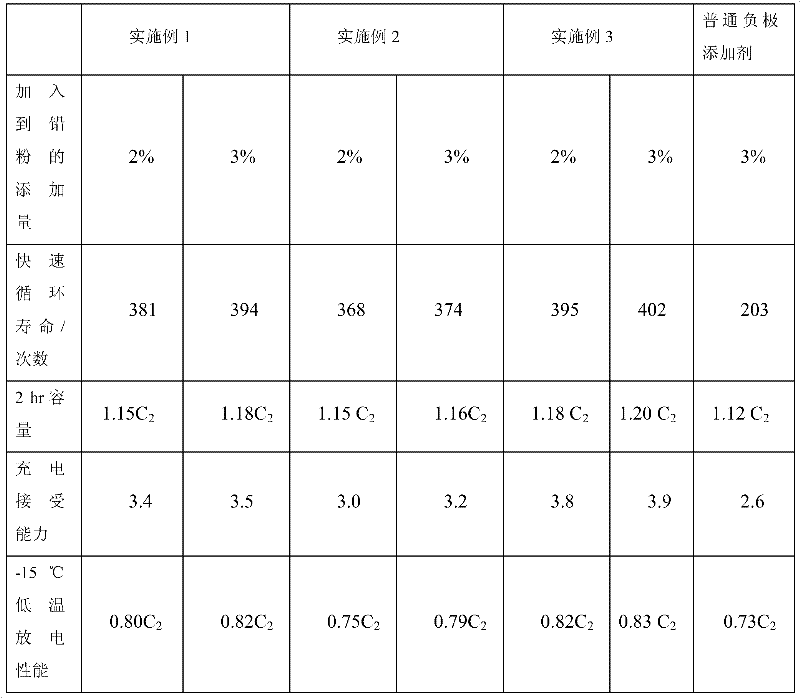Composite additive for negative electrode of lead-acid storage battery and its preparation and use method
A composite additive, lead-acid battery technology, applied in battery electrodes, circuits, electrical components, etc., can solve the problems of insufficient battery charge acceptance and low-temperature discharge performance, huge impact on battery performance, and many types of negative electrode additives. , to achieve the effect of improving charging acceptance and low-temperature discharge performance, easy to use, and avoiding production and operation errors
- Summary
- Abstract
- Description
- Claims
- Application Information
AI Technical Summary
Problems solved by technology
Method used
Image
Examples
Embodiment 1
[0017] Mix raw materials according to mass percentage: 5% oak extract, 5% sodium lignosulfonate, 15% humic acid, 10% carbon black, 30% barium sulfate, tetrabasic lead sulfate with a median particle size of 3.5 μm 35%. Put the mixed material into the ball mill at a speed of 60r / min, mix for 3 hours, and pack the material.
Embodiment 2
[0019] Mix raw materials according to mass percentage: 10% oak extract, 8% sodium lignosulfonate, 15% humic acid, 10% carbon black, 25% barium sulfate, tetrabasic lead sulfate with a median particle size of 1.5 μm 32%. Put the mixed material into the ball mill at a speed of 60r / min, mix for 2 hours, and pack the material.
Embodiment 3
[0021] Mix the raw materials according to mass percentage: 15% of oak extract, 8% of sodium lignosulfonate, 15% of humic acid, 5% of carbon black, 20% of barium sulfate, tetrabasic lead sulfate with a median particle size of 1.0 μm 37%. Put the mixed material into the ball mill at a speed of 60r / min, mix for 4 hours, and pack the material.
PUM
| Property | Measurement | Unit |
|---|---|---|
| Median particle size | aaaaa | aaaaa |
Abstract
Description
Claims
Application Information
 Login to View More
Login to View More - R&D Engineer
- R&D Manager
- IP Professional
- Industry Leading Data Capabilities
- Powerful AI technology
- Patent DNA Extraction
Browse by: Latest US Patents, China's latest patents, Technical Efficacy Thesaurus, Application Domain, Technology Topic, Popular Technical Reports.
© 2024 PatSnap. All rights reserved.Legal|Privacy policy|Modern Slavery Act Transparency Statement|Sitemap|About US| Contact US: help@patsnap.com








